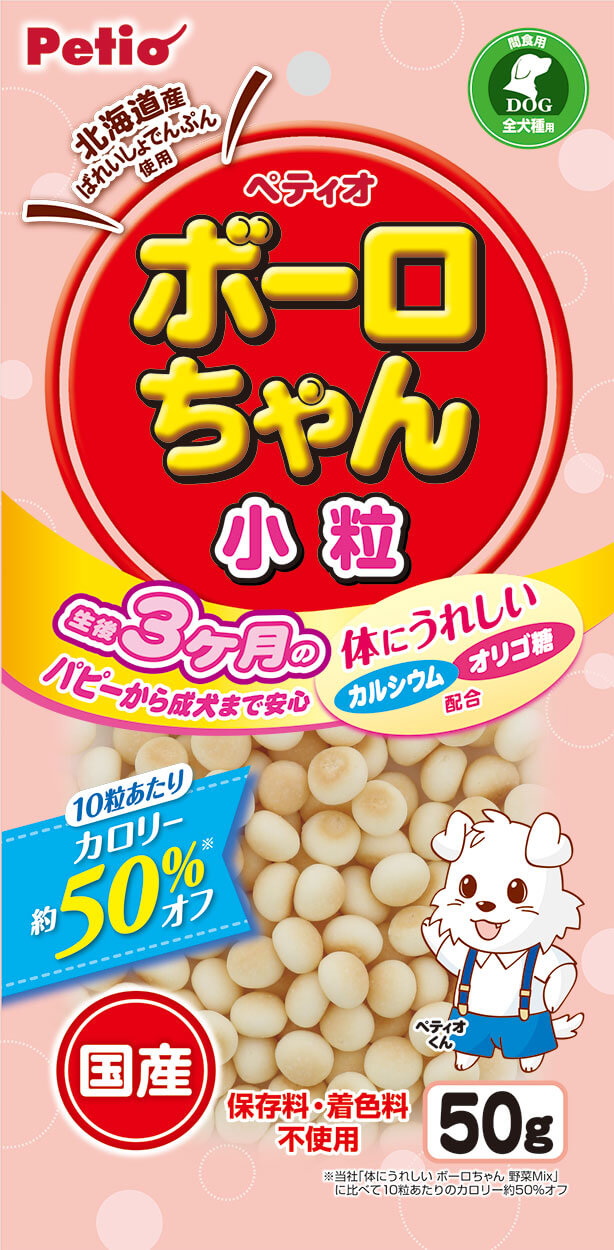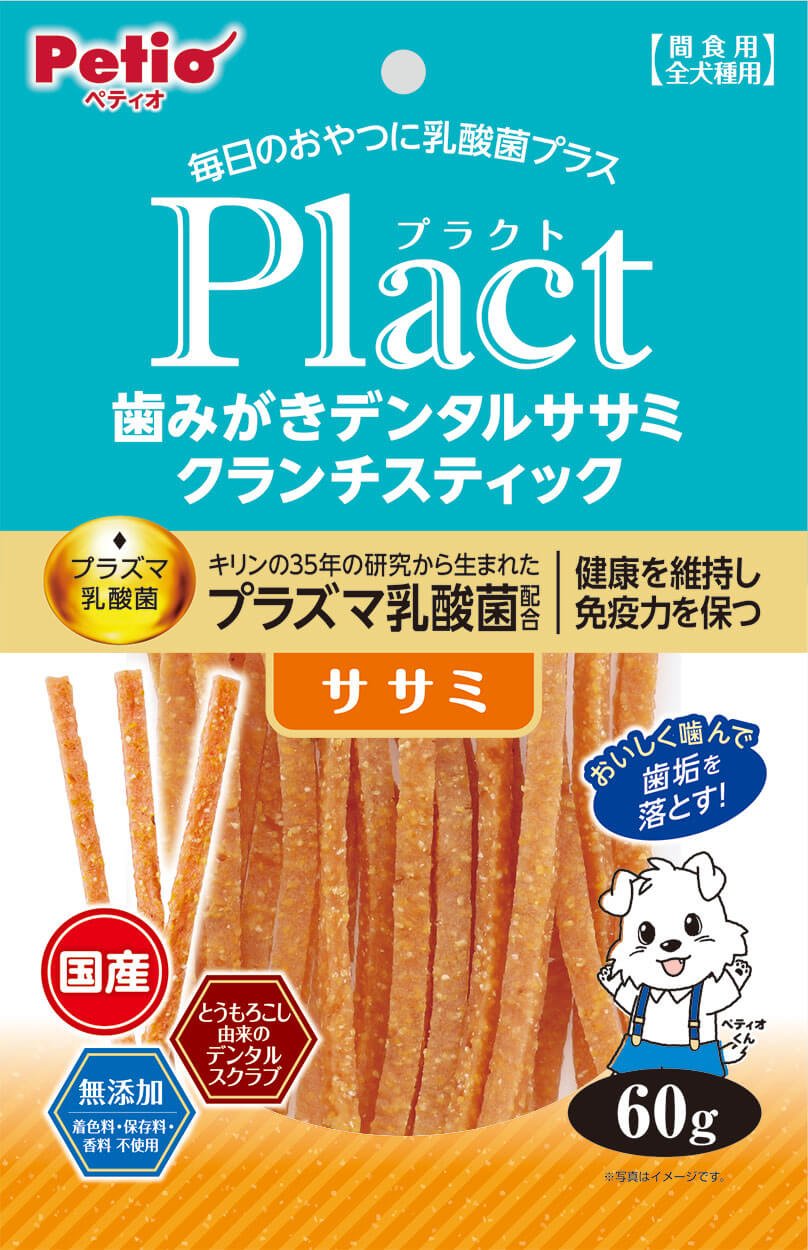Feature / Pickup
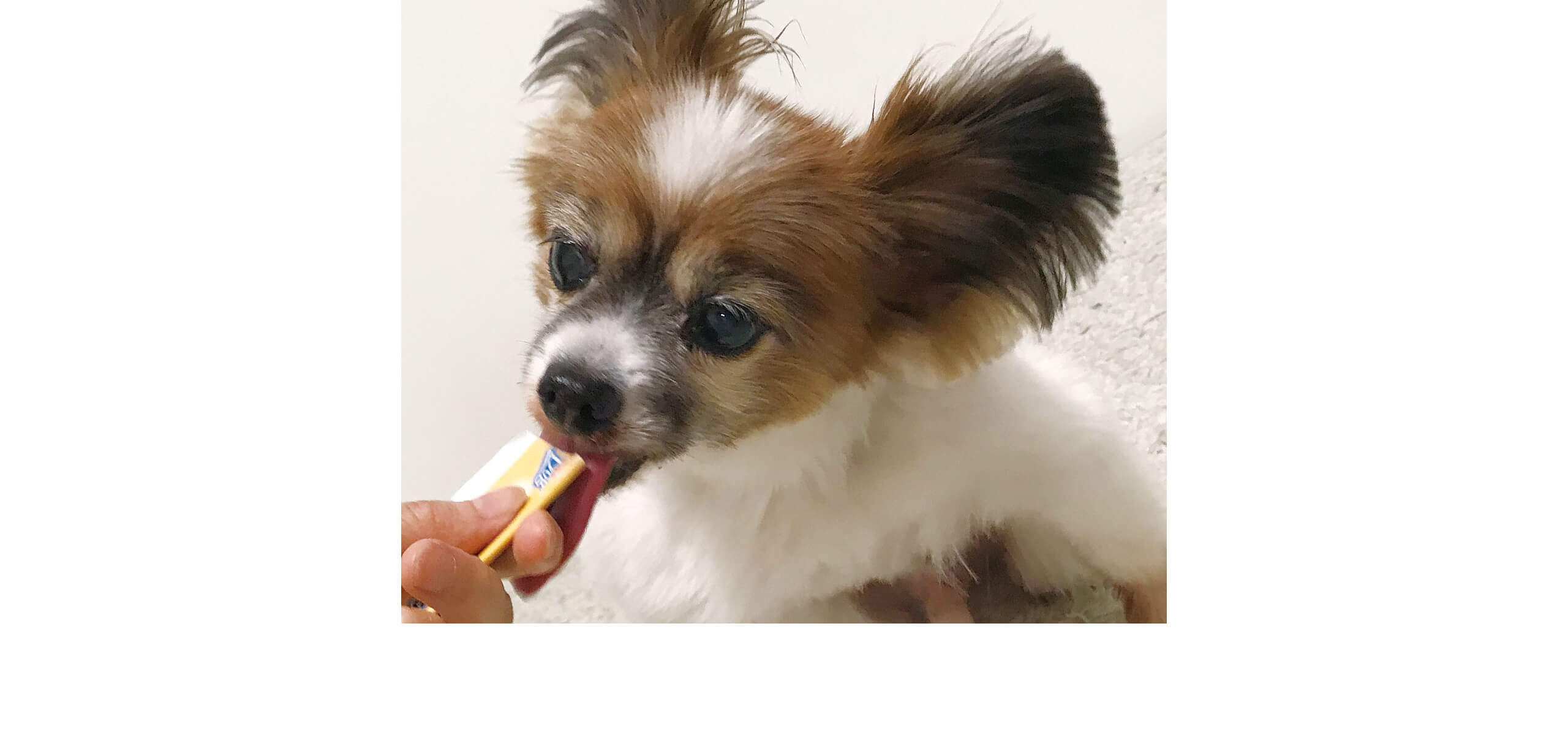
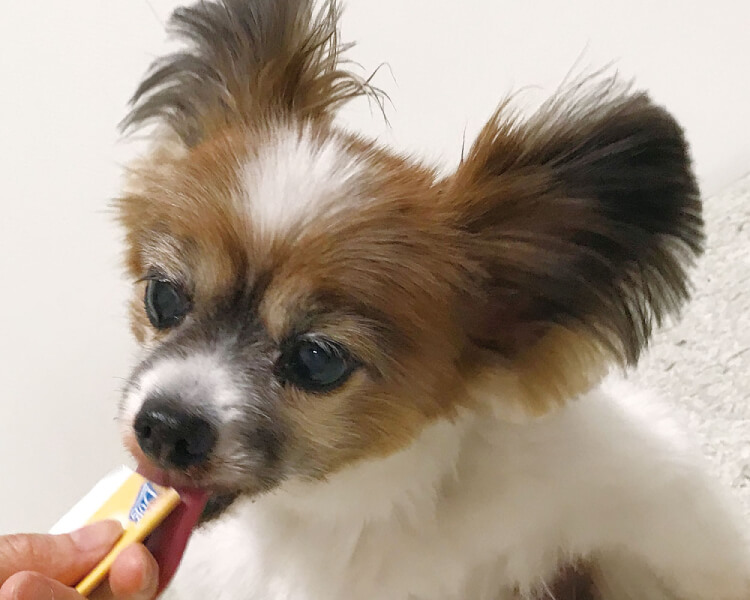
This time, in addition to the timing of giving treats to puppies, we will explain the types and amounts of treats, points on how to give treats, etc. (Last updated December 21, 2022)

- When can I give my puppy a treat?
- Do dogs need snacks in the first place?
- Tips on how to give a puppy a snack
- What is the recommended daily snack amount that can be given to a puppy?
- When is the time to give a snack?
- Petio's recommended dog treats related products
- When giving a snack to a puppy, start with a small amount while watching the situation
- Frequently Asked Questions
Puppy Snack Q&A

Supervision
3-918-9 Mukuya, Shimada City, Shizuoka Prefecture
TEL 0547-33-6010
Graduated from the Department of Veterinary Medicine, Faculty of Veterinary Medicine, Kitasato University. He is a part-time lecturer at the Renaissance Pet Academy, a vocational school, and a lecturer at the Japan Pet Massage Association and the Pet Medicinal Food International Association. Participated in rescue activities for animals affected by the Great East Japan Earthquake. In addition to general Western medicine, work on animal health through acupuncture and moxibustion treatment, Chinese medicine, pet massage, etc.
1When can I give my puppy a treat?
Just as we humans are relieved to have a snack, dogs are also happy with the snack.
However, among the puppies that have just left their mother dog, they are in the middle of their physical growth. Since the internal organs and digestive organs are not yet fully developed, basically do not give snacks.
Specifically, you should not give snacks until 2-3 months after birth, when the baby food is about to end.
Especially during this time, it is possible that the snack may get stuck in the throat or cause indigestion, leading to an accident or poor physical condition. In addition, it is time to build more and more body, so it is necessary to get proper nutrition from food. Therefore, please wait a little longer for the snack.
From about 3 months of age, it's time to start giving soft, small-sized snacks.
Even after three months, the internal organs are not yet fully matured. Please note that hard treats can damage the mucous membranes of internal organs. Give something that is easy to digest and absorb, such as a soft bolo or a small cookie.
However, the age of the moon is just a guide. Each puppy has a different degree of growth. Some children grow up steadily, while others grow up slowly. So, just because you're three months old doesn't mean it's okay to give a snack to any child.
When a puppy just comes home, it's a difficult time to get used to the new environment. You should closely observe the puppy and decide if it is okay to give it a treat. At first, it may be a good idea to start by giving some of the dog food you usually eat as a snack.
2Do dogs need snacks in the first place?
Is a treat really necessary for a dog? Basically, if you eat the amount of food you need each day, you don't really need a snack. This is because food alone is sufficient to provide essential nutrition for the day.
However, around 3 to 6 months after birth, the number of meals per day is decreasing.
From the weaning period of about 50 days after birth to about 6 months after birth, when the puppy is weaned from the mother dog and begins to eat rice, the puppy cannot eat a large amount of rice at one time because the digestive function is immature. Therefore, at first, feed the rice 3 to 4 times a day. After 3 months of age, we will gradually reduce the number of times to twice a day.
At this time, the interval between meals becomes wider than before, and the puppy may become hungry. Sometimes I get irritated when I'm hungry, or I vomit because of too much acid in my stomach.
Therefore, when you reduce the number of meals, you can relieve your hunger by giving a snack. However, you should not lose your appetite at the time of the important meal, so please give it at the right timing between meals.
In addition, snacks have more than just filling the puppy's stomach, such as rewards for discipline, communication with the owner, and the opportunity to foster sociality by receiving snacks from people who meet for the first time. ..
3Tips on how to give a puppy a snack
What should I be aware of when giving a treat to a puppy? Here are some tips on how to give a snack for each age of the puppy and points to note when giving a snack.
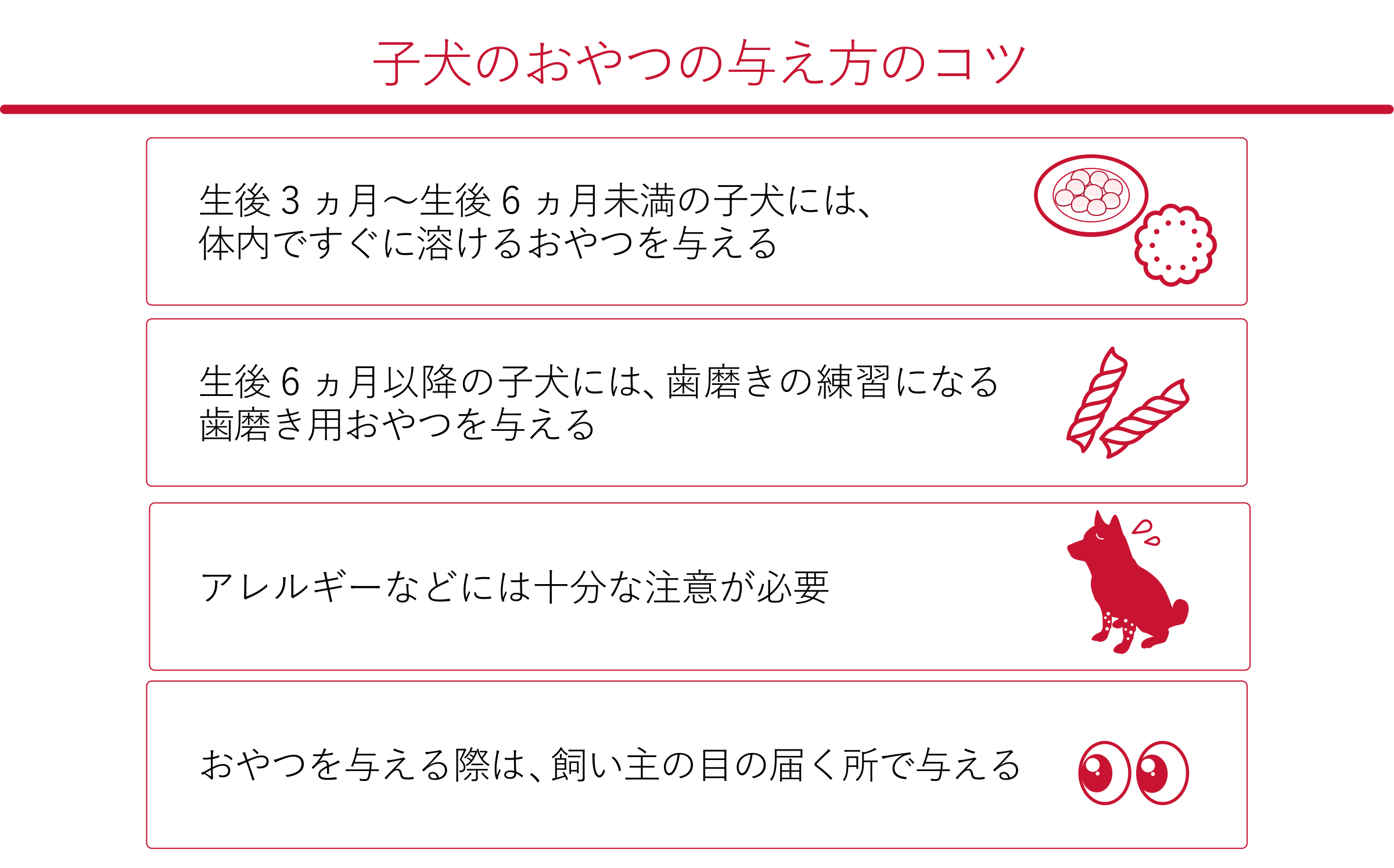
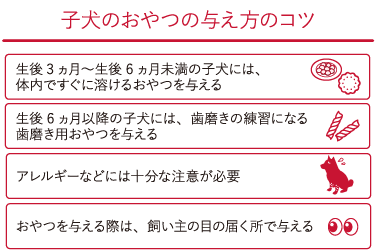
Give puppies 3 months to less than 6 months old a treat that dissolves quickly in the body
Generally, when you pick up a puppy from a pet store or breeder, most of them are about 3 months old puppies who start eating baby food away from their mother dog. About 3 months old is the time when you eat soft and fluffy food.
Therefore, soft bolo and cookies are suitable as snacks to give around this time. As for the size, we recommend the one that is as small as possible.
On the other hand, hard foods such as hard jerky and dog bones that cannot be easily chewed and large foods are NG. If a puppy with an underdeveloped internal organs and digestive system accidentally swallows a hard or large object, there is a risk of damaging the mucous membrane of the digestive tract or clogging the digestive tract with snacks. ..
Therefore, even if you swallow the whole thing, choose a type of snack that will dissolve quickly in your body.
Give puppies 6 months and older a toothpaste treat to practice brushing their teeth
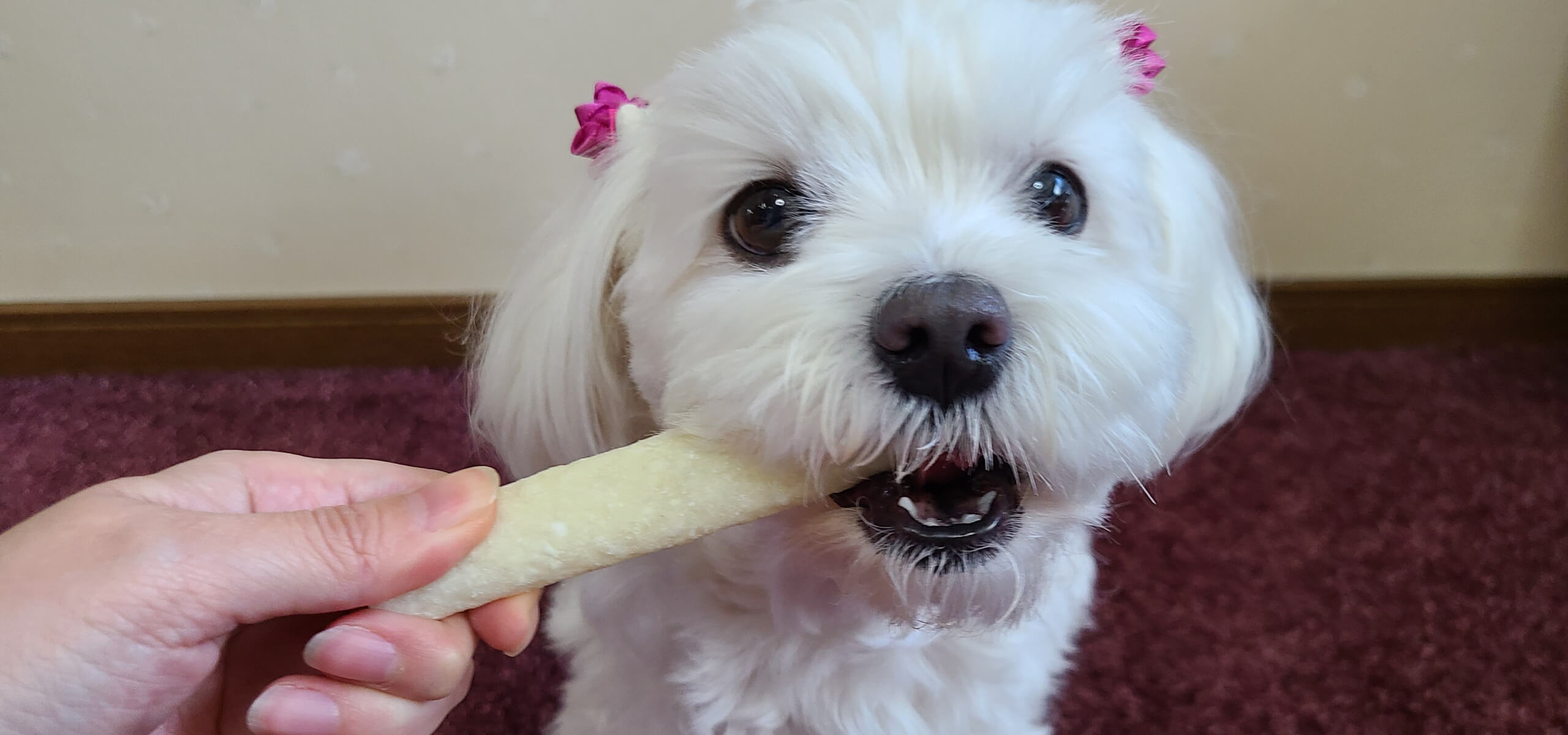
By about 6 months of age, internal organ functions generally develop. Therefore, it is okay to give a gradually harder snack.
Around this time, the teeth of puppies are transformed from deciduous teeth to permanent teeth of adults. Many puppies have itchy gums because they are in the middle of being regrown. Therefore, it is a good idea to give a toothpaste snack for brushing practice. However, in that case, please choose a toothpaste snack for puppies. This is because an adult's teeth should not be scraped because he was absorbed in chewing on a snack.
In addition, although the body is getting bigger, the internal organs are developing, and the ability to squeeze is getting stronger, if you give a large snack as it is, there is a risk that it will get stuck in your throat, so be careful.
In the first place, dogs, unlike us humans, do not chew food sufficiently in the mouth before swallowing it. The way dogs eat is to drink the whole dog as it is if it is large enough to be swallowed. Therefore, give a hard and large treat after tearing or crushing it as small as possible to prevent the puppy from swallowing it.
Be careful about allergies
When giving your puppy your first treat, you need to be careful about allergic reactions and disagreements. It's hard to tell if it suits your puppy's constitution just by looking at the packaging and ingredient labels. Therefore, when giving a new snack, be sure to start with a small amount.
In the unlikely event of diarrhea, abdominal pain, vomiting, etc., stop giving immediately and go to a veterinary clinic immediately. If you are worried about allergies, we recommend that you consult with us in advance, such as having an allergy test at a veterinary clinic.
When giving a snack, give it within the reach of the owner
When giving a treat to a puppy, something may happen, such as clogging a large treat in the throat or causing diarrhea because the treat does not fit the body.
Therefore, when giving a snack, be sure to eat it within the reach of the owner, rather than leaving it alone.
In particular, toothpaste snacks are often oversized in order to clean the surface of the teeth. Please be sure to give it when you are with the owner so that an accident does not occur.
4What is the recommended daily snack amount that can be given to a puppy?
It is said that the amount of snacks that can be given to dogs is about 10% of the daily diet for adult dogs. However, puppy foods are generally high in calories, so it's best to give them less than the recommended amount for adult dogs.
The following is a rough guide.
<Estimated amount of snacks per day that can be given to puppies>
・ Puppies around 3 months old (weight about 2.5 kg): up to about 5 g of chicken jerky
・ Puppies around 6 months old (weight about 4 kg): up to about 7 g of chicken jerky
However, these are just guidelines. The amount given depends on the weight and growth of the puppy, the type and ingredients of the snack to be given. Therefore, be sure to check the proper intake amount indicated on the package before deciding the amount. Some products only list intakes for adult dogs. In that case, give less.
Also, since puppies are in the middle of building their bodies, I want them to eat well-balanced foods. Although snacks are about 10% of food, they should not affect your diet, such as not eating food. If a puppy likes a treat, he may want it more than food, but it's best to keep it as small as possible.
One method is to reduce the amount of each dose and divide it into several doses to prevent overfeeding. This is because puppies are satisfied that they have "eaten a snack" even if the amount of each dose is small. Alternatively, it is recommended that you give some of the food you normally give as a snack. In that case, you can divide the amount of food you give as a snack from the total amount of food, so you can prevent overfeeding. Also, if your veterinarian gives you instructions on snacks, give priority to them.
5When is the time to give a snack?
When is the best time to give a treat to a puppy? Here are three recommended timings.

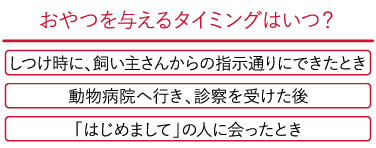
At the time of discipline, when you can follow the instructions from the owner
When disciplining, if the puppy is good at the instructions from the owner, giving a lot of compliments and a treat as a reward will make it easier for the puppy to understand that it was complimented. It is effective for teaching actions such as "waiting", "sitting", "come", and "lying down" necessary for toilet training and daily life.
However, you don't have to reward yourself every time you learn these instructions and become more successful. Because, if you continue to give rewards as it is, it will be natural to get a snack if you can do something, which leads to the behavior pattern of "listening to the owner to get a snack". You need to be careful because it will end up.
Once you follow the owner's instructions, give them a treat only once every few times. Instead, give me a lot of compliments. It's normal to follow the success of the toilet and the owner's instructions, and in the end it should be calm just by complimenting it in words. Keep in mind that the snacks for discipline are just a chance for the puppy to remember.
After going to a veterinary clinic and having a medical examination
A good time to give a treat as a reward is when you go to a veterinary clinic.
Among puppies, there are many opportunities to go to a veterinary clinic for vaccinations such as vaccines and health examinations. If you give a treat as a reward after receiving a medical examination, you may be able to avoid becoming disliked by the hospital by remembering that "I've worked hard at the hospital so I'll get a snack!".
When I met a "nice to meet you" person
It is also recommended to give snacks from people who have never met, such as people who met for the first time in the park or customers who visited the house. Doing so will help you become accustomed to humans and foster sociality.
6Petio's recommended dog treats related products
Petio also has a large selection of dog treats that can be safely given to puppies. Here, we would like to introduce three particularly recommended products.
Featured Products
-
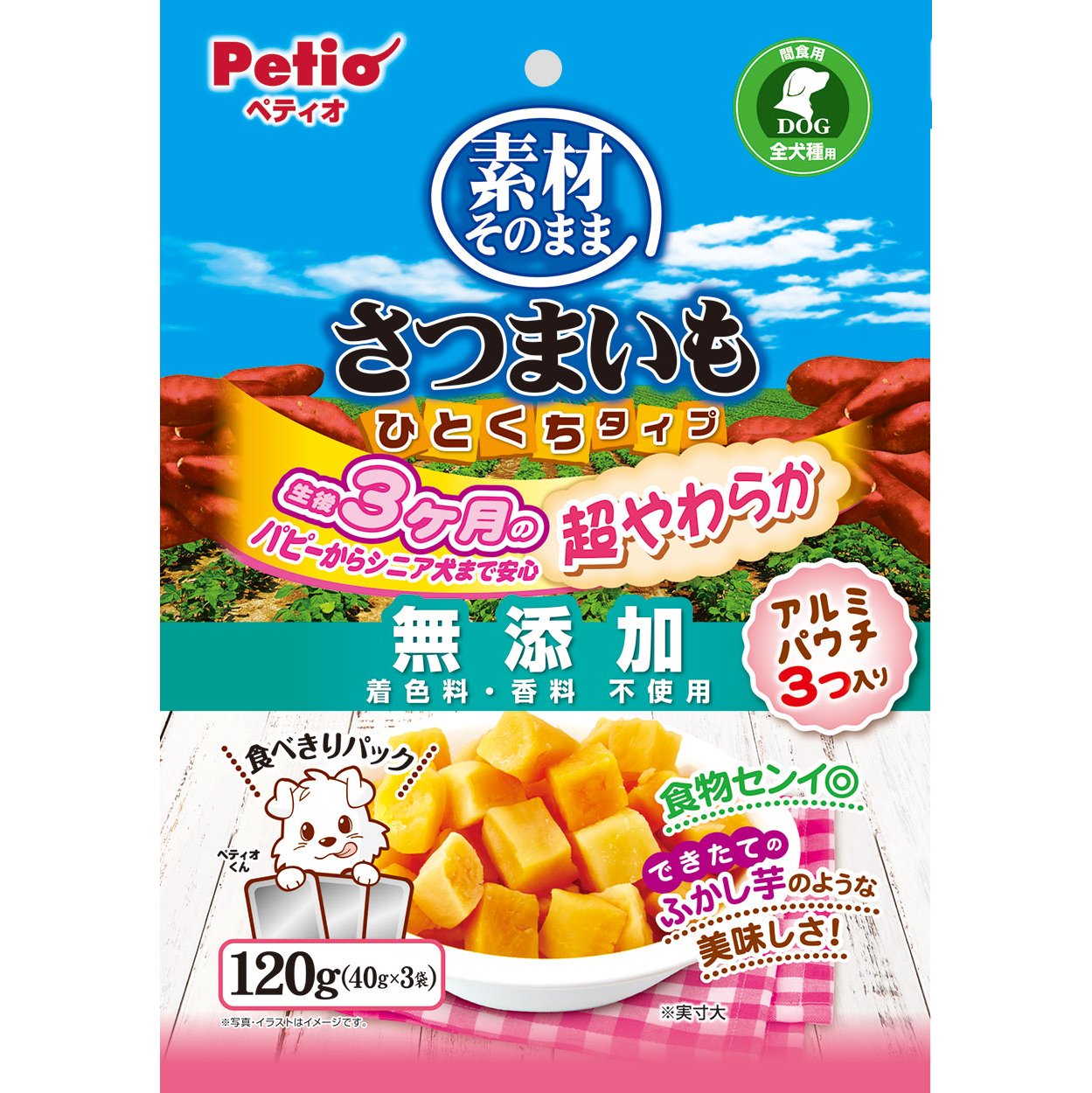 Raw material sweet potato bite type super soft 120g"Sweet potato made with the same ingredients"
Raw material sweet potato bite type super soft 120g"Sweet potato made with the same ingredients"
Super soft type. Convenient 3-pack. -
 Healthy Boro-chan Vegetable Mix 50gMelt-in-your-mouth without using flour or milk
Healthy Boro-chan Vegetable Mix 50gMelt-in-your-mouth without using flour or milk
An easy snack. -
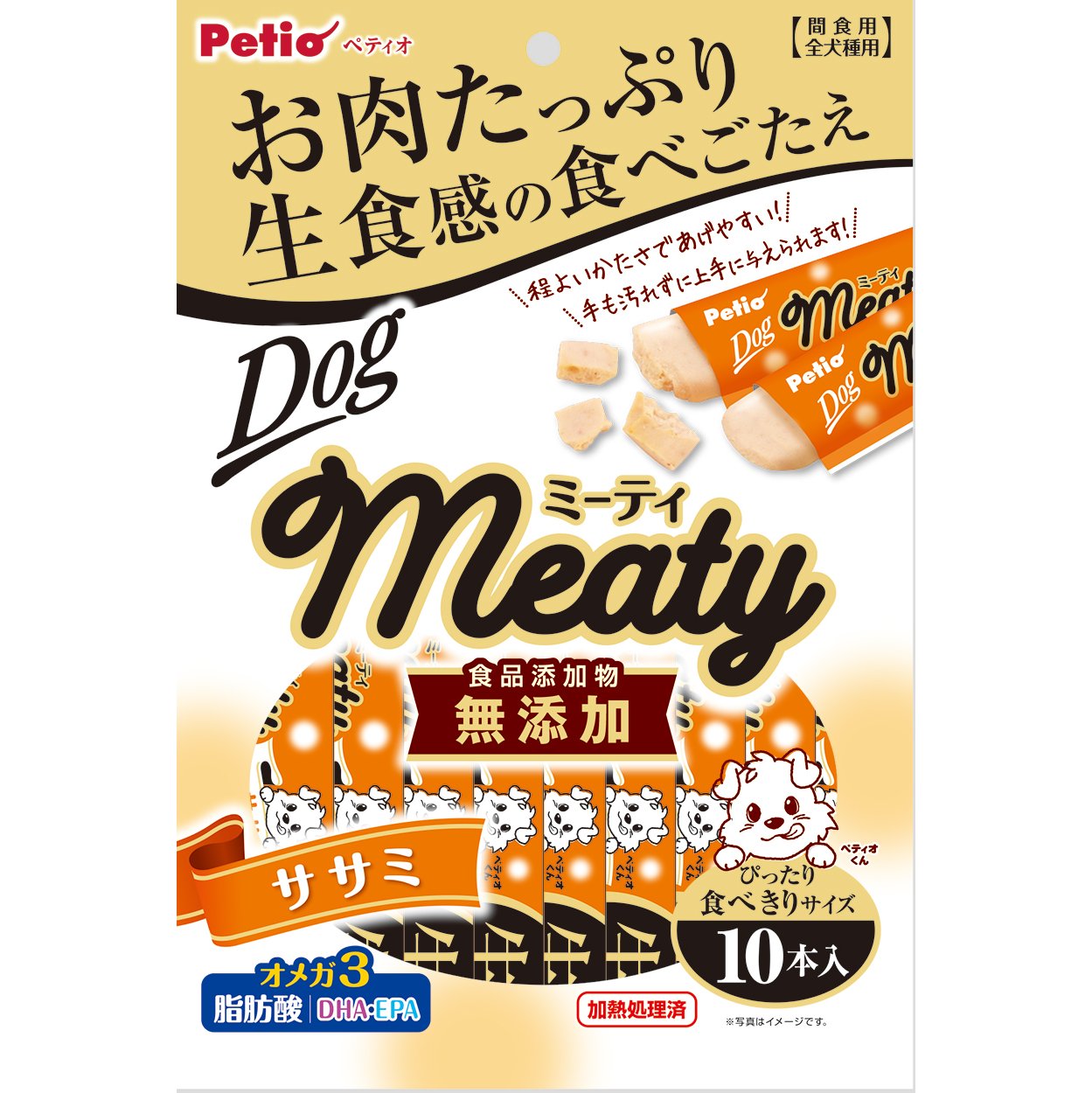 Meety chicken 10 piecesNo additives and a chewy texture
Meety chicken 10 piecesNo additives and a chewy texture
Sasami snack.
7When giving a snack to a puppy, start with a small amount while watching the situation
Like humans, puppies are happy with snacks. Snacks also have the benefit of disciplining and fostering puppy sociality. However, depending on the growth and physical condition of the puppy, there are some snacks that can be eaten and some that cannot be eaten, so careful observation is required when giving snacks. Also, just because a puppy is happy, you should be careful not to give too much. Snacks are not a substitute for meals just because they are palatable, so you need to be careful when giving them.
Be sure to give snacks in the right amount and at the right time, and enjoy your daily life with your puppy while trying to keep your puppy healthy.
8
Frequently Asked QuestionsPuppy Snack Q&A
- When can I give my puppy a treat?
-
Do not give treats until 2 to 3 months after birth, about the time when baby food is finished. Especially during this period, snacks can get stuck in your throat or cause indigestion, which can lead to accidents and poor physical condition. From around 3 months of age, it is a good time to start giving small, soft treats.
- Any tips on how to feed my puppy?
-
As a tip on how to give treats to puppies, give treats that dissolve quickly in the body for puppies between 3 and 6 months old, and toothpaste treats for practicing brushing teeth for puppies over 6 months old. let's give. At that time, be careful about allergies, etc., and give treats where the owner can see them.
- When should you give your puppy treats?
-
The recommended timing for giving snacks to puppies is when they follow the owner's instructions during training, as a reward after going to the animal hospital and receiving a medical examination, or giving a "nice to meet you" that you have never met before. It is also recommended to give treats from other people.
Special feature that you want to check together
-
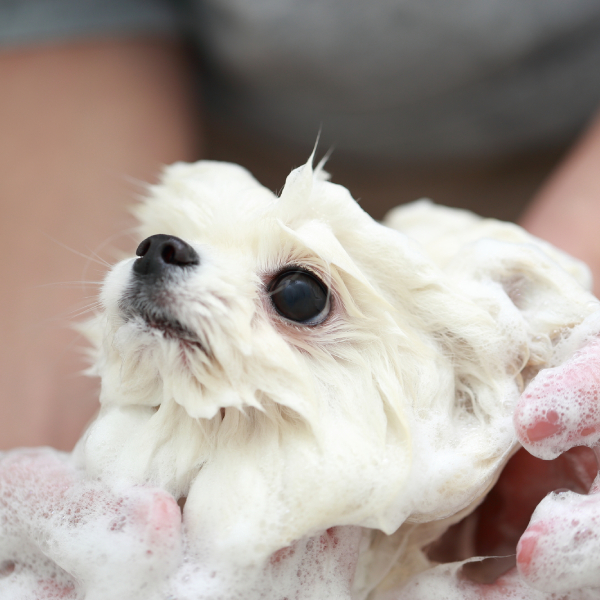 [Veterinarian supervision] What should I do with puppy shampoo? Points to note
[Veterinarian supervision] What should I do with puppy shampoo? Points to note -
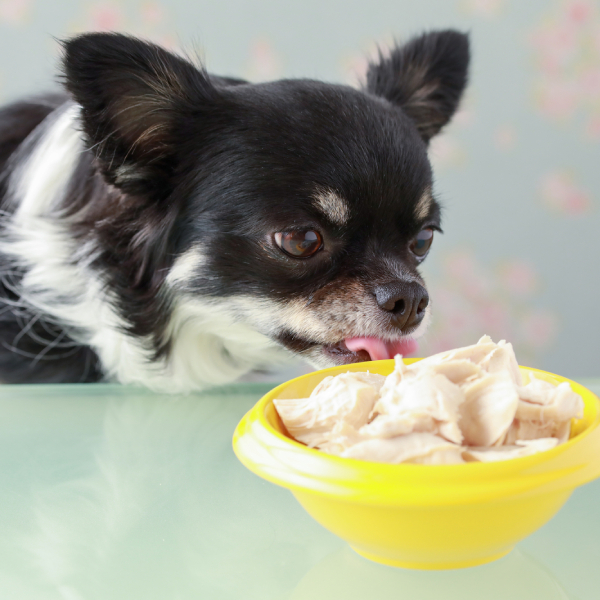 [Veterinarian supervision] Is dog scissors OK? Explains recommended giving methods and precautions
[Veterinarian supervision] Is dog scissors OK? Explains recommended giving methods and precautions -
 [Veterinarian supervision] What toys are suitable for puppies? Explain the types and points to choose
[Veterinarian supervision] What toys are suitable for puppies? Explain the types and points to choose -
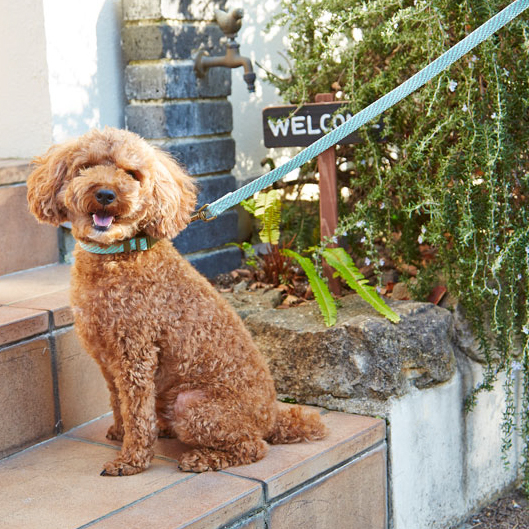 [Supervised by a veterinarian] When should a puppy wear a collar? Explanation of how to choose and acclimate
[Supervised by a veterinarian] When should a puppy wear a collar? Explanation of how to choose and acclimate
